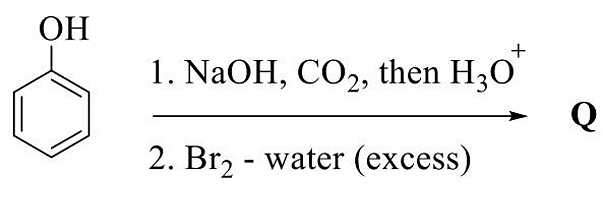In mammals, hematopoietic stem cells that give rise to different types of blood cells are known as:
Show Hint
- ( totipotent stem cells. )
- ( pluripotent stem cells. )
- ( myeloid progenitor cells. )
- ( lymphoid progenitor cells. )
The Correct Option is B
Solution and Explanation
Classification of Stem Cells: Totipotent stem cells are capable of forming an entire organism, including both the embryonic and extraembryonic tissues. Pluripotent stem cells can give rise to cells of all three germ layers but cannot form an entire organism. Multipotent stem cells, like hematopoietic stem cells, can develop into multiple, but limited, cell types. Correct Identification: Among the options given: Totipotent stem cells (A) are incorrect as they have the broadest differentiation potential, beyond what is necessary for blood cell formation. Pluripotent stem cells (B) are the correct answer. While HSCs are traditionally considered multipotent, they fall under the broader category of pluripotency in terms of their ability to differentiate into various types of blood cells. Myeloid and lymphoid progenitor cells (C and D) are more specific types of cells derived from hematopoietic stem cells, not the stem cells themselves.
Top Questions on Mass spectrometry
- The major product in the given reaction sequence is Q. The mass spectrum of Q shows
([M] = molecular ion peak)
- GATE CY - 2024
- Inorganic Chemistry
- Mass spectrometry
- Which among the following characteristics of Laser light specifies the precise movement of all individual light waves together through time and space?
- AP PGECET - 2024
- Instrumentation Engineering
- Mass spectrometry
- Recombination of electron-hole produces ____ in LEDs.
- AP PGECET - 2024
- Instrumentation Engineering
- Mass spectrometry
- Magnetic sector analyzer is a part of
- AP PGECET - 2024
- Instrumentation Engineering
- Mass spectrometry
- Which ionization technique in mass spectrometry is most suitable for large biomolecules like proteins:
- GPAT - 2024
- Pharmaceutical Analysis
- Mass spectrometry
Questions Asked in GATE XL exam
An electricity utility company charges ₹7 per kWh. If a 40-watt desk light is left on for 10 hours each night for 180 days, what would be the cost of energy consumption? If the desk light is on for 2 more hours each night for the 180 days, what would be the percentage-increase in the cost of energy consumption?
The \( F_{121} \) value of a known microorganism with \( Z \) value of \( 11^\circ C \) is 2.4 min for 99.9999% inactivation. For a 12D inactivation of the said microorganism at \( 143^\circ C \), the \( F \) value (in min) is .......... (rounded off to 3 decimal places)
- GATE XL - 2025
- Food Technology
- Consider a five-digit number PQRST that has distinct digits P, Q, R, S, and T, and satisfies the following conditions:
1. \( P<Q \)
2. \( S>P>T \)
3. \( R<T \)
If integers 1 through 5 are used to construct such a number, the value of P is:- GATE ST - 2025
- GATE CS - 2025
- GATE MN - 2025
- GATE XE - 2025
- GATE XL - 2025
- mathematical reasoning
Three villages P, Q, and R are located in such a way that the distance PQ = 13 km, QR = 14 km, and RP = 15 km, as shown in the figure. A straight road joins Q and R. It is proposed to connect P to this road QR by constructing another road. What is the minimum possible length (in km) of this connecting road?
Note: The figure shown is representative.
- A business person buys potatoes of two different varieties P and Q, mixes them in a certain ratio and sells them at ₹192 per kg.
The cost of the variety P is ₹800 for 5 kg.
The cost of the variety Q is ₹800 for 4 kg.
If the person gets 8% profit, what is the P : Q ratio (by weight)?